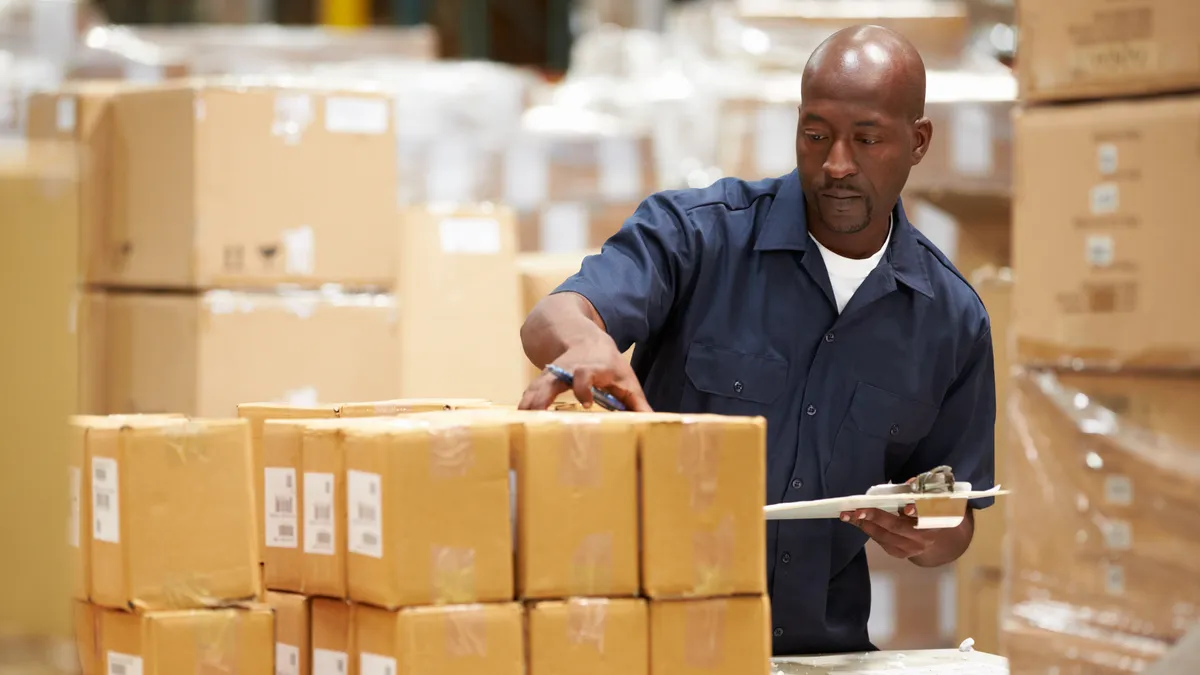Dive Brief:
- A team of researchers at the University of Washington (UW) are developing an app to track and predict health and safety risks for warehouse workers, according to a recent blog post. The project is funded by the Washington State government and Amazon Robotics.
- The researchers recorded 3D videos of workers performing standard tasks such as loading bins, picking heavy objects from high shelves and 17 other actions to gauge the impact on the human body. Using this data, the app can display a "risk score" to help workers and warehouse managers make better decisions about allocating certain activities to the growing ranks of robots now joining the workforce.
- "Now that people are starting to work in settings where robots are used, we have a unique opportunity to split up the work so that the robots are doing the risky jobs," Ashis Banerjee, a senior author of the project report and an assistant professor at the university, said in the post. "Robots and humans could have an active collaboration, where a robot can say, ‘I see that you are picking up these heavy objects from the top shelf and I think you may be doing that a lot of times. Let me help you.'"
Dive Insight:
Warehouse work can be taxing both physically and mentally, with high potential for injuries sustained on the job, or from long periods of performing repetitive tasks such as picking inventory. As a result, more companies are incorporating wearable technologies to make life easier for workers, and at times, gather data on their activity for efficiency and/or risk analysis purposes.
A common practice in warehouses today is a self-assessment using diagrams to interpret strenuous behavior. These assessments, argued Banerjee, are time-consuming for employees. Automating this task will provide more satisfying feedback for workers and employers, he said.
As a funder of the UW project, Amazon has direct experience with this as it is a leader in the use of autonomous robots in warehouses and experiencing its fair share of employee resentment over working conditions. A Business Insider report found workers "described a 'brutal' reality of long hours, physical labor, fears about taking time off, [and] workplace injuries" across its U.S., UK and European warehouses after peak season 2018.
While the company has since invested in higher wages, workforce development, and stated it is proud of its "great working conditions," it has acknowledged the implementation of robots and other advanced technologies into its warehouses, intended to improve efficiency and take over more taxing roles, can introduce additional safety risks. To solve this, it introduced a utility belt, that alerted robots to a humans' presence, reducing the potential for accidental collisions.
"Many robot accidents occur during non-routine operating conditions, such as programming, maintenance, testing, setup or adjustment," according to OSHA. "During many of these operations, the worker may temporarily be within the robot’s working envelope where unintended operations could result in injuries."
As robot-human interactions continue to become the norm in warehouses, companies are looking to new technologies such as wearables and other solutions like UW's prototype to better figure out how to keep employees safe and maximize efficiency while reducing labor risks.













